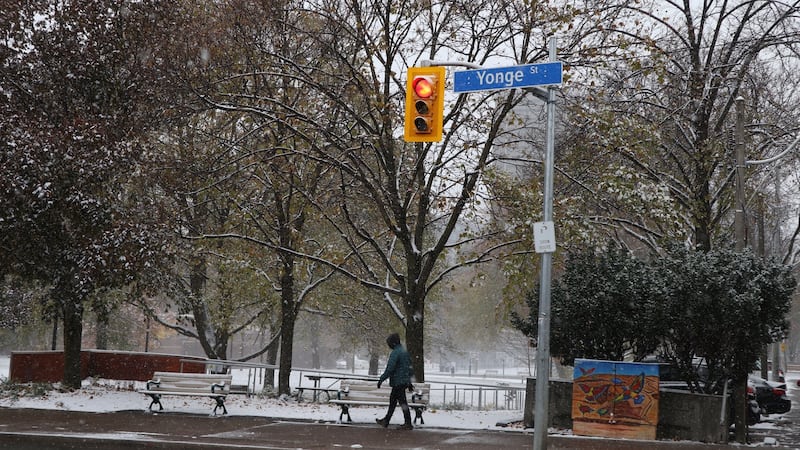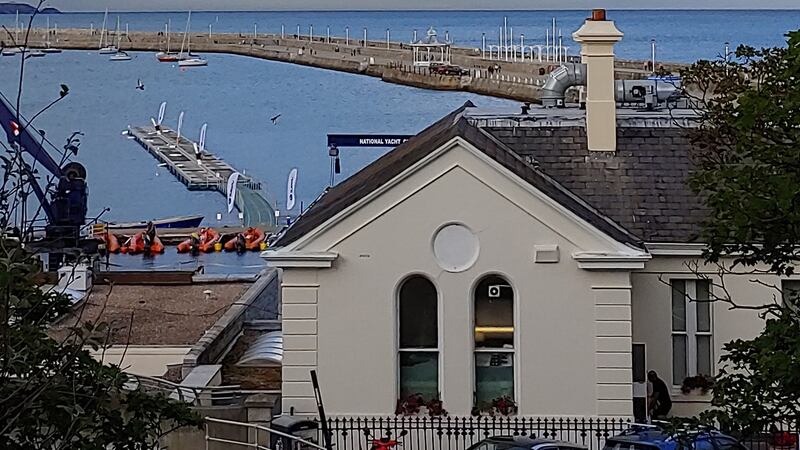I remember exactly where I was when I felt the first pull of homesickness. I was visiting Ireland in October 2013 and staying at the Morrison Hotel in Dublin just by the Ha'penny Bridge. I was back in my room early on a Friday evening and I turned on the TV. The Late Late Show was on and I started watching it. It was a programme I'd watched every Saturday night as a child with my family growing up in Cork. We'd sit on our knees on the carpet in the living room and stare unblinkingly at the screen for two hours. The show was compulsive viewing because at that time it was the only medium in the country where you could both see and hear famous personalities of the day being interviewed. Fantastic scandals and rows had the potential to erupt on the show, and it's all anyone and everyone talked about the following day.
But what struck me that Friday night in Dublin watching the show was that everyone in the TV studio was having a great laugh, teasing, joking, and slagging each other. The verbal jousting was a theatrical tour-de-force, which made you feel alive and connected, and I was knocked out by it. I had the curious sensation that I was seeing my own culture properly for the first time.
I had left Ireland in 1994 for Toronto. In Dublin I'd been a cellist with the RTÉ National Symphony Orchestra since the age of 17. The orchestra was a tiny multicultural enclave in the midst of an economically stagnant and conservative Ireland. There were fabulous characters from various European countries in the orchestra, but salaries were bad, Ireland was so expensive and the Catholic Church ruled. What I craved was the buzz and adventure of a big cosmopolitan city. Around this time I met my future husband John, a Canadian pianist, and I fell so head over heels in love with him that I could barely speak. We got married on the gorgeous Vermillion Lakes in the Canadian Rockies in -25 degrees.
In Toronto we founded an opera company and spent 25 successful years commissioning, developing, and producing new Canadian chamber opera. Toronto was a gleaming new city in which to live. Customer service was extraordinary, the healthcare system was wonderful, gender relations were more evolved, people were polite and they were willing to give you a chance. It took a while to understand this new culture. Instead of talking about where you hoped to go on your summer holidays, people talked about how many hours they worked, and the harder you worked, evidently the better the person you were.
I could feel the underpinnings of the Scottish Presbyterianism that had founded Ontario, and gradually its measured rationality and earnestness started displacing the Irish theatrical verve and appreciation for the absurd that I'd been used to. Work was your worth, but I was bursting with energy and ambition so hard work suited me just fine.

And then 20 years later I watched the Late Late Show on that Friday night in 2013 and I couldn’t pretend that the show didn’t have a visceral impact. In watching the show, for some unearthly reason, I felt like I’d been granted a time-sensitive once in a lifetime portal into a potent vibrant culture. I had the feeling that if I didn’t catch hold of it, it would disappear forever and that I would end up floating untethered in outer space.
As I flew west to Toronto afterwards, I knew that I would somehow begin to sew myself back into my culture. I had been brought up speaking Irish in Cork and it now began to bother me that my Irish had become broken through not speaking it any longer so in Toronto I found a young man from the Corca Dhuibhne Gaeltacht and I paid him to speak Irish with me for an hour every week. The ebullience and musicality of the language was so infectious that people in the cafés in which we met would start grinning and come over to ask which language we were speaking. Then I started investigating Irish language courses in Connemara and west Kerry, and began heading off in the summers to Oidhreacht Chorca Dhuibhne in Baile an Fheirtéaraigh and Acadamh na hOllscolaíochta Gaeilge in An Cheathrú Rua. The Irish language became the perfect tool with which to reorientate myself.
The experiences in the Gaeltacht were like plunging into an earthy and evocative world that seemed to bubble up from the bowels of the earth. Forget about being measured, medium, moderate or middling. I rediscovered that the Irish language has an expressive richness that is deeply connected to the landscape, and a wild explosiveness that is uncontrollable. It seems to have continuous momentum towards exuberance. As you can’t consider the Irish language in isolation without its music, singing, dancing, and literature, the potential of sensory overflow can become intoxicating. I realised that the dynamism in conversation in Ireland has its roots in the Irish language. While most of the country speaks English now, we still communicate with Irish language inflections. The defining element that adds the sheer madness to the Irish character is that the Irish language connects us to an alternate dimension where the unseen is as real as the seen, resulting in a psyche that co-exists happily with the absurd, irrational, theatric, and the otherworldly. I couldn’t get enough of it.
On flights back to Toronto after these trips to the Gaeltacht, I began to experience a kind of disconnectedness. It felt like I could be going to any north American city - Seattle, Vancouver, Edmonton, or Chicago. I didn't seem emotionally connected to Toronto any longer.

Then one evening I was out in Toronto's Pearson Airport about to fly to Ottawa for work. I knew Aer Lingus had opened a new direct route into Toronto. I happened to glance out a window and there it was - the plane with the big green shamrock on the tail and the green and turquoise lines running along the body. I started crying.
I told my husband very gently that I wanted to be back in Ireland by the age of 60 and that my decision was immovable. Great warm guy that he is, he said: “Let’s see if we can do that. Home is wherever you are so I’m coming with you.”
We moved back to Ireland this year, my 60th year, and we live in Dún Laoghaire south of Dublin. Every day I walk down to the sea and I still get a thrill as I turn into Marine Road and see Howth in the distance, while ships, sailboats and ferries pass in front of Dún Laoghaire harbour.
Last week, I had to go to Dundalk, and I took the Belfast bound train out of Connolly Station. I had pre-booked my ticket and was running up and down the platform looking for Coach D. I couldn't find it so I said to a station guard "Any idea where Coach D is?" He looked at me as if I were completely mad and said: "There's no Coach D today. Today D is F." I burst out laughing. Irrationality like that is gold dust and I could understand so clearly how James Joyce and Flann O' Brien and all those other great crazy Irish writers had the pulse of the Irish psyche clamped tightly in their fists.
I climbed into Coach F and tried to find my seat. But that’s a whole other story.
Dáirine Ní Mheadhra is Artistic Director of Tionscadal na nAmhrán Ealaíne Gaeilge/Irish Language Art Song Project, a collection of 50 new Irish language art songs, commissioned from Irish and International composers. www.cmc.ie/IrishArtSong


















